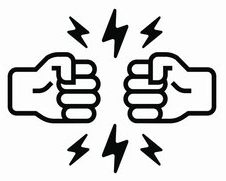What are the major sources of marine pollution?
What are the major sources of marine pollution?
Here are some of the major causes of marine pollution:
- Nonpoint source pollution (Runoff)
- Oil spills.
- Littering.
- Ocean mining.
- Harmful to marine animals.
- A threat to human health.
- Reduce chemical fertilizer use.
- Opt for reusable bottles and utensils.
What are the 3 sources of marine pollution?
There are three main types of inputs of pollution into the ocean: direct discharge of waste into the oceans, runoff into the waters due to rain, and pollutants released from the atmosphere.
What are the types of marine pollution?
How Do We Pollute? 9 Types of Ocean Pollution
- Garbage. Garbage and plastic debris (bags, straws, cutlery, six-pack rings, water bottles, etc.) is a huge threat to the survival of marine fauna.
- Sunscreen and Other Topicals.
- Oil Seepage.
- Sewage.
- Agricultural and Aquaculture Runoff.
- Industrial Waste.
- Carbon Dioxide.
- Noise.
What are the two biggest contributors to marine pollution?
This waste affects the daily life of fish and other marine creatures. Marine pollution is a growing problem in today’s world. Our ocean is being flooded with two main types of pollution: chemicals and trash. Chemical contamination, or nutrient pollution, is concerning for health, environmental, and economic reasons.
What are the two main marine pollutant categories?
Biological and chemical impacts on marine biology Humans around the world discharge sewage, industrial waste, chemical waste and radioactive materials into the ocean. These pollutants either sink into the ocean depths or float. They are consumed by small marine organisms, thereby affecting the food chain.
What are the two main types of ocean pollution?
Pollutants are dumped into the ocean. This waste affects the daily life of fish and other marine creatures. Marine pollution is a growing problem in today’s world. Our ocean is being flooded with two main types of pollution: chemicals and trash.
Which is not a marine pollutant?
The DOT hazmat table (49 CFR 172.101) lists mercury as corrosive (8) not toxic (6.1), and it is not a marine pollutant, like mercury compounds. is a severe marine pollutant, otherwise it is not.
How does pollution affect marine ecosystems?
This sharp increase in plastic entering our waters harms not only marine life but also humanity. Plastic kills fish, birds, marine mammals and sea turtles, destroys habitats and even affects animals’ mating rituals, which can have devastating consequences and can wipe out entire species.
What are the top 5 pollutants?
5 Major Outdoor Air Pollutants
- Ozone (O3)
- Nitrogen Oxides (NOx)
- Carbon Monoxide (CO)
- Sulfur Dioxide (SO2)
- Particulate Matter (PM10 and PM2.5)
What kind of pollution is harmful to marine life?
The danger to marine life comes in various forms, such as chemical discharge from industrial sources, human sewage, runoff from agricultural areas also contain harmful substance such as phosphorus and nitrogen which promote algae growth. These all factors effect directly or indirectly the marine life.
Where does most of the ocean pollution come from?
Around 80% of the pollution in our ocean is found from land, with most of it being from plastic, one of the many materials involved in littering by humans. Other land-related sources of ocean pollution can mainly be traced back to sewage, toxic chemicals from industries, and oil spills.
What are some of the solutions to marine pollution?
Solutions for marine pollution include prevention and cleanup. Disposable and single-use plastic is abundantly used in today’s society, from shopping bags to shipping packaging to plastic bottles. Changing society’s approach to plastic use will be a long and economically challenging process. Cleanup, in contrast, may be impossible for some items.
What are some examples of point source pollution?
Point source pollution events often have large impacts, but fortunately, they occur less often. Discharge from faulty or damaged factories or water treatment systems is also considered point source pollution. Two underwater robots were deployed to autonomously monitor and measure the toxicity of harmful algal blooms in the Great Lakes.
